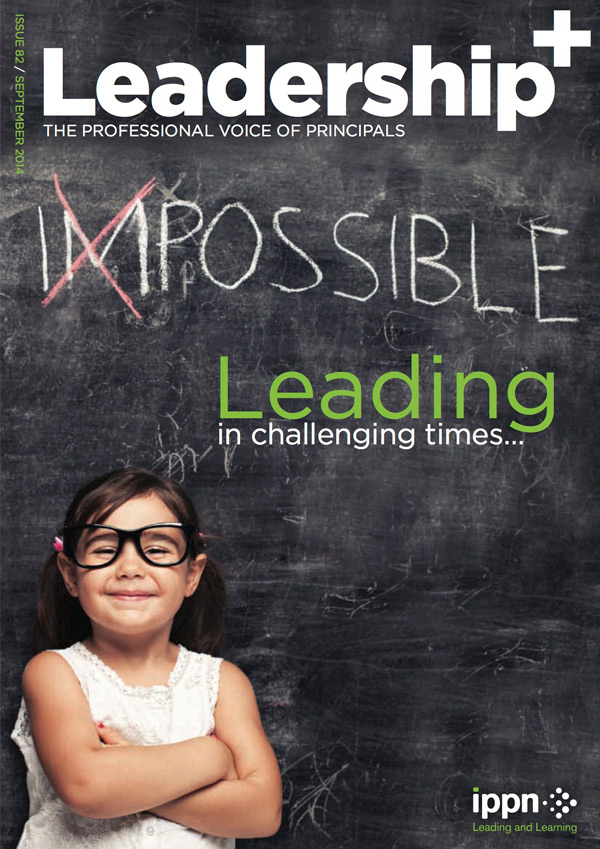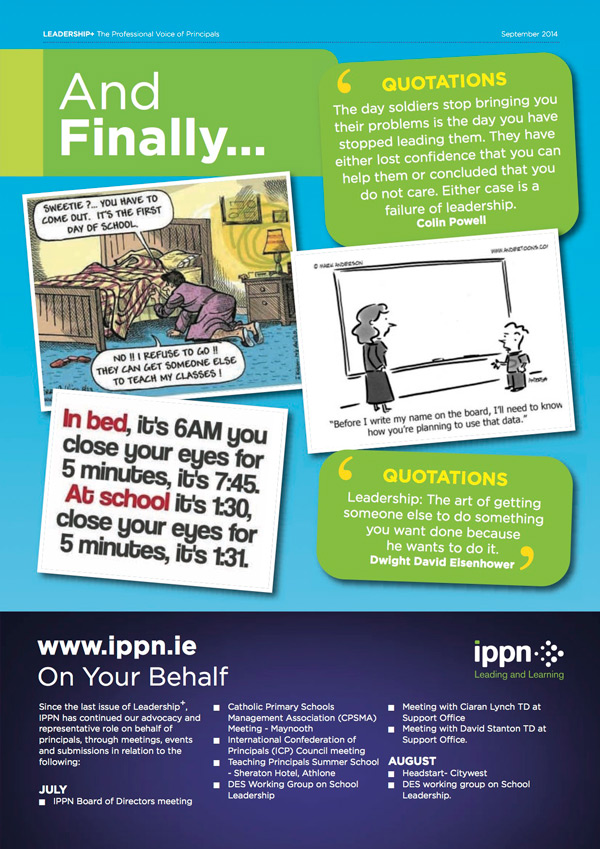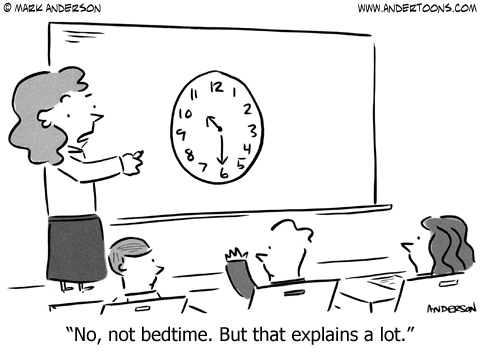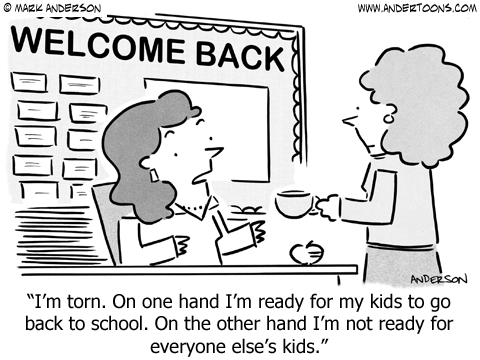Cartoon Close-Up is a recurring feature where I highlight Andertoons cartoon subscribers, custom cartoon clients, and customers who just buy the occasional cartoon.
This edition’s answers come from subscriber, Geraldine D’Arcy.
1) Tell me a little about yourself and your job.
I manage the research and publications side of things for the Irish Primary Principals’ Network – a professional body for Irish primary school leaders – and have been editing our member magazine Leadership+ for nearly 10 years now.
2) How do you use the cartoons from your Andertoons subscription?
We use Andertoons on our ‘And Finally!’ page – to introduce some light-heartedness into what can be a very serious publication. It highlights the everyday humour in our primary schools in a lovely tongue-in-cheek way that reflects IPPN’s in-house ‘style.’
3) Please give me an example of how someone has responded to a cartoon.
Members tell us they love a quiet chuckle over a quick cuppa and that the cartoons resonate with them – all principals have stories like those reflected in the cartoons. Perhaps it’s because they are so true but also a little on the edge of what people might be comfortable admitting…
4) Which cartoon is your personal favorite?
Cartoon #6883 –
Also #7012 –
5) Where online can people find out more about you?
www.ippn.ie. Most content is restricted to members but all our publications, submissions and press releases are open to the public.
6) Do you have any questions for me?
How do you decide what to feature, and what to leave out? What inspires the stories you tell in your cartoons – were you/your parents in the teaching profession?
Cartoons actually go through a lot of editing. I try to boil the art and captions down as much as possible to use only what’s absolutely necessary to get the idea across. That being said, I do get a little wordy and draw meaningless but fun details occasionally.
As for teaching, my wife is a teacher (1st/2nd dual-language), so I get plenty of inspiration and material from her. My mom also taught piano lessons for more than 30 years.
Thanks so much to Geraldine for her time and terrific answers!
If you use Andertoons cartoons and would like to be featured here on the blog and in our monthly newsletter, drop me a line!






